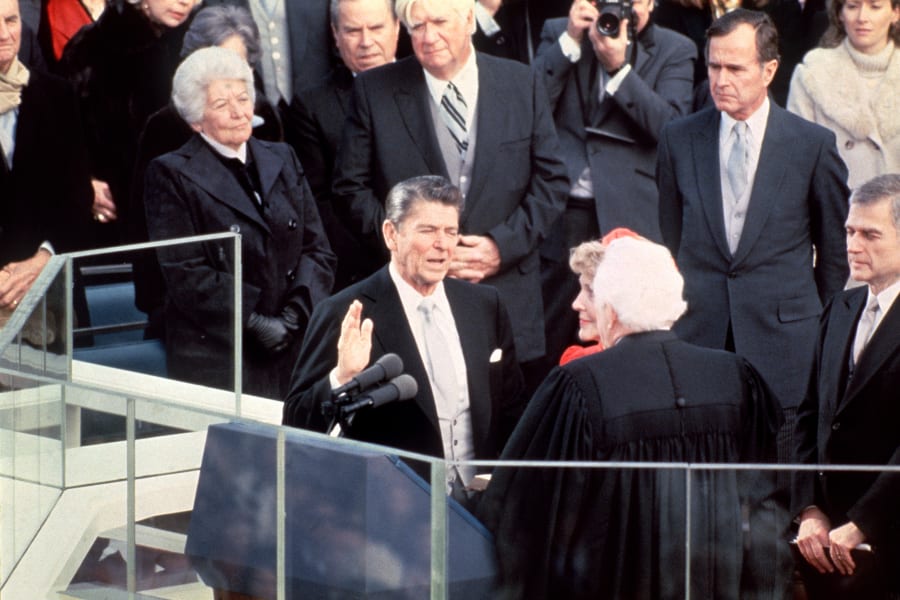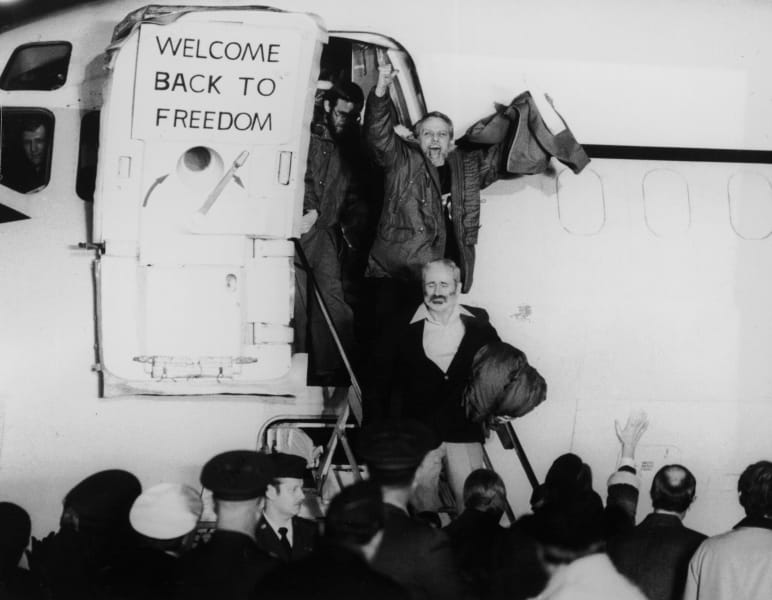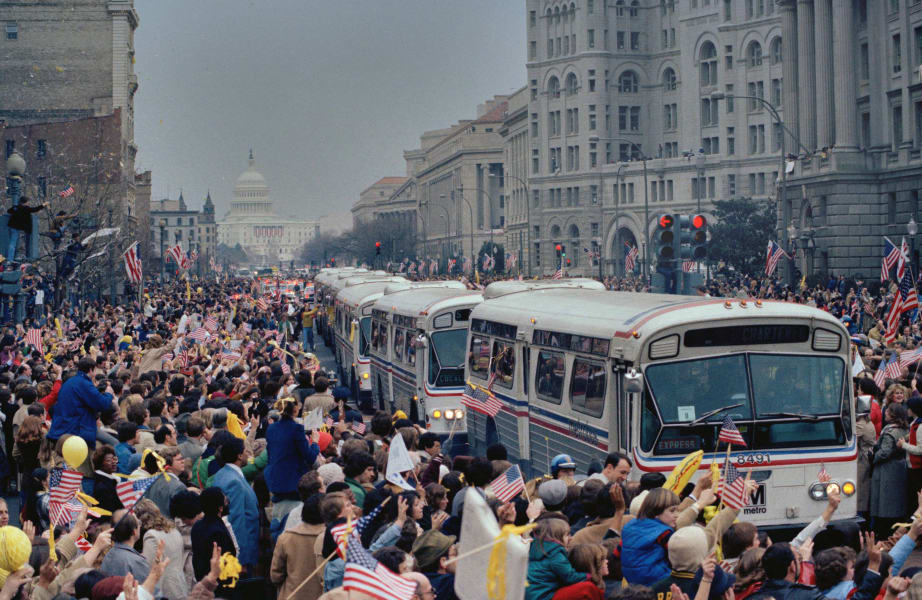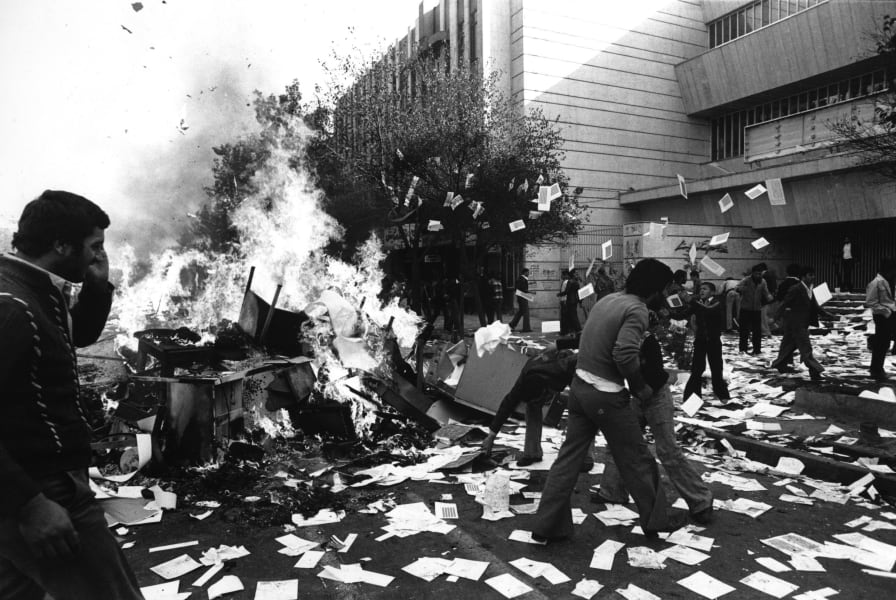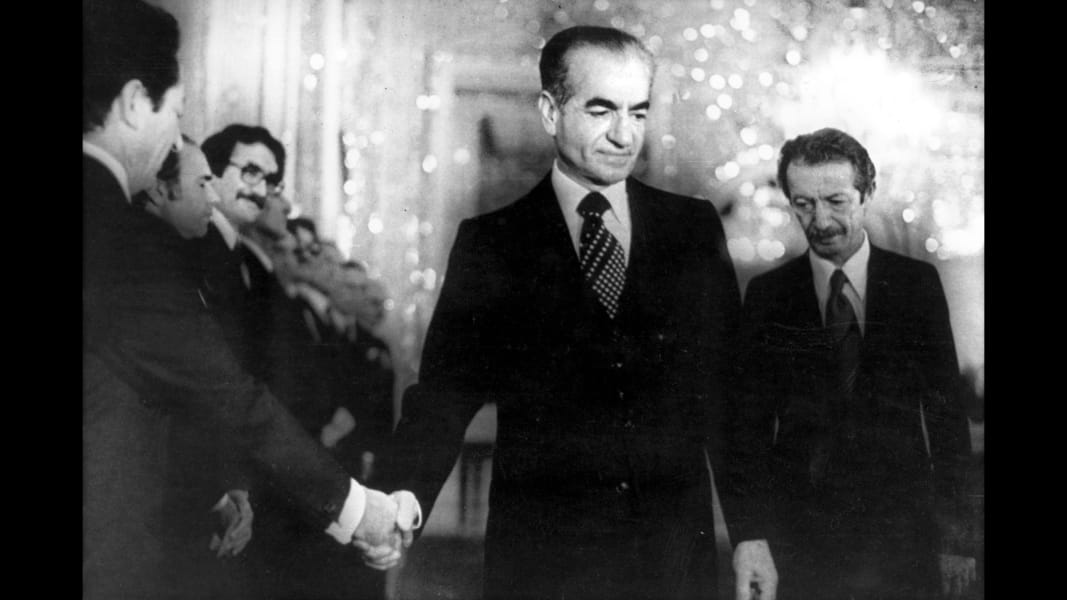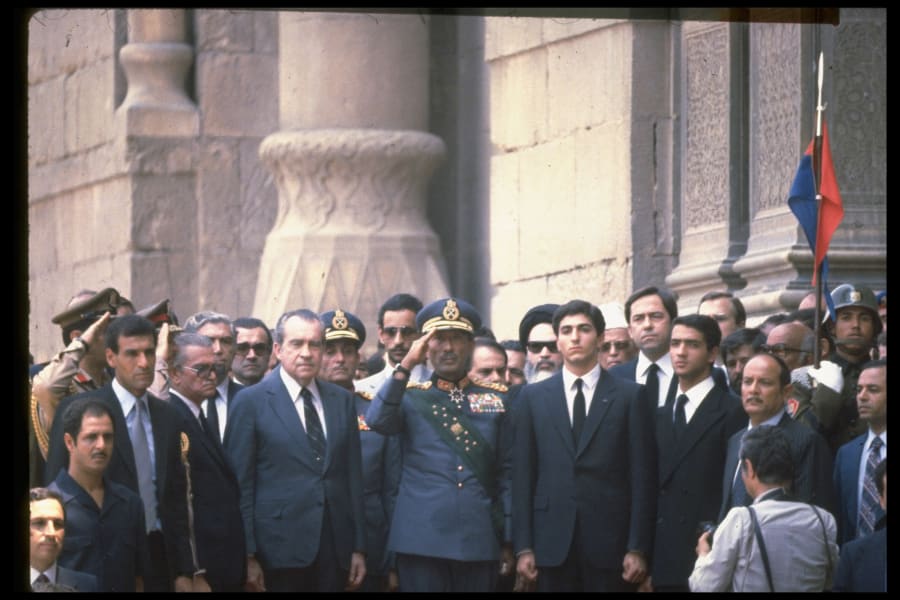Share


1 of 19
Thirty-six years ago, militant students supporting Iran's Islamic Revolution stormed the U.S. Embassy in Tehran and took scores of hostages. Ultimately, 52 Americans were held for 444 days. Click through the gallery to see how the crisis unfolded. Alain MINGAM/Gamma-Rapho/Getty Images
In 1978, Shah Mohammed Reza Pahlavi's authoritarian rule sparks demonstrations and riots in Iran. Government buildings and shops were looted, furniture was set ablaze and documents were thrown into the streets. Kaveh Kazemi/Getty Images
The Shah shakes hands with a minister of the new civilian government in Tehran on January 6, 1979. Ten days later, he fled the country and headed to Egypt. AFP/Getty Images
Demonstrators celebrating the Shah's departure flood the streets of Tehran on January 17, 1979. Saris/AP
After 14 years in exile, Ayatollah Ruhollah Khomeini returns to lead Iran on February 1, 1979. GABRIEL DUVAL/AFP/Getty Images
Iranian students climb over the wall of the U.S. Embassy in Tehran on November 4, 1979. ImageForum/AFP/Getty Images
After storming the embassy, a group of students took 90 people hostage, including 66 Americans. They demanded the extradition of the Shah from the United States, where the ousted ruler was receiving cancer treatment. Ayatollah Khomeini issued a statement of support for the students' actions. GAMMA/Gamma-Keystone/Getty Images
One of the student kidnappers presents pictures of the hostages during a news conference on November 8, 1979. Alain MINGAM/Gamma-Keystone/Getty Images
Demonstrators burn an effigy of Uncle Sam outside the U.S. Embassy in Tehran on November 13, 1979. They had gathered to show support for the Iranian militants who took over the embassy. The effigy was branded with "CIA" on its arm. AP
A group of released U.S. Embassy staffers in Tehran hold a press conference on November 19, 1979. Khomeini ordered the release of female and African-American hostages, bringing the total number of Americans held to 53. Another hostage was later released due to illness. H. KOTILAINEN/AFP/Getty Images
From right, President Jimmy Carter, Vice President Walter Mondale, Secretary of State Cyrus Vance and Secretary of Defense Harold Brown disembark from their helicopter to meet about the Iran hostage crisis at Camp David in Maryland on November 23, 1979. Carter ordered Iranian assets in U.S. banks frozen and eventually cut diplomatic ties with Iran. Library of Congress
One of the kidnappers stands guard on the roof of the U.S. Embassy in Tehran on November 30, 1979. Arnaud DE WILDENBERG/Gamma-Keystone/Getty Images
Six American Embassy employees avoided capture by hiding in the homes of Canadian Embassy officers. Aided by the Canadian government and the CIA, they fled Iran on January 28, 1980. From left, Kathleen Stafford, Cora Lijek, Mark Lijek and Joseph Stafford are seen during a visit to Toronto in February 1980. Frank Lennon/Toronto Star/Getty Images
The Shah, second from left, visits with Egyptian President Anwar Sadat in Cairo on April 17, 1980. The Shah had returned to Egypt a month earlier. AFP/Getty Images
Remains of a burned-out American helicopter are seen in front of an abandoned chopper in the eastern desert of Iran in April 1980. Eight U.S. servicemen were killed when a helicopter and a transport plane collided during a failed attempt to rescue the hostages. AP
Former U.S. President Richard Nixon stands with Sadat, center, and Iranian Crown Prince Reza at the Shah's funeral in Cairo. The Shah died of cancer on July 27, 1980. Sahm Doherty/The LIFE Images Collection/Getty Images
U.S. President Ronald Reagan is sworn into office on January 20, 1981. President Carter's inability to successfully negotiate the release of the hostages had become a major political liability. AFP/Getty Images
Minutes after Reagan's 1981 inauguration, the remaining U.S. hostages are released. They were flown to Wiesbaden Air Base in Germany, and the terms of their release included the unfreezing of Iranian assets. Express/Getty Images
A caravan of buses carrying the former hostages and their relatives makes its way through the cheering crowd on Washington's Pennsylvania Avenue on January 27, 1981. AP
